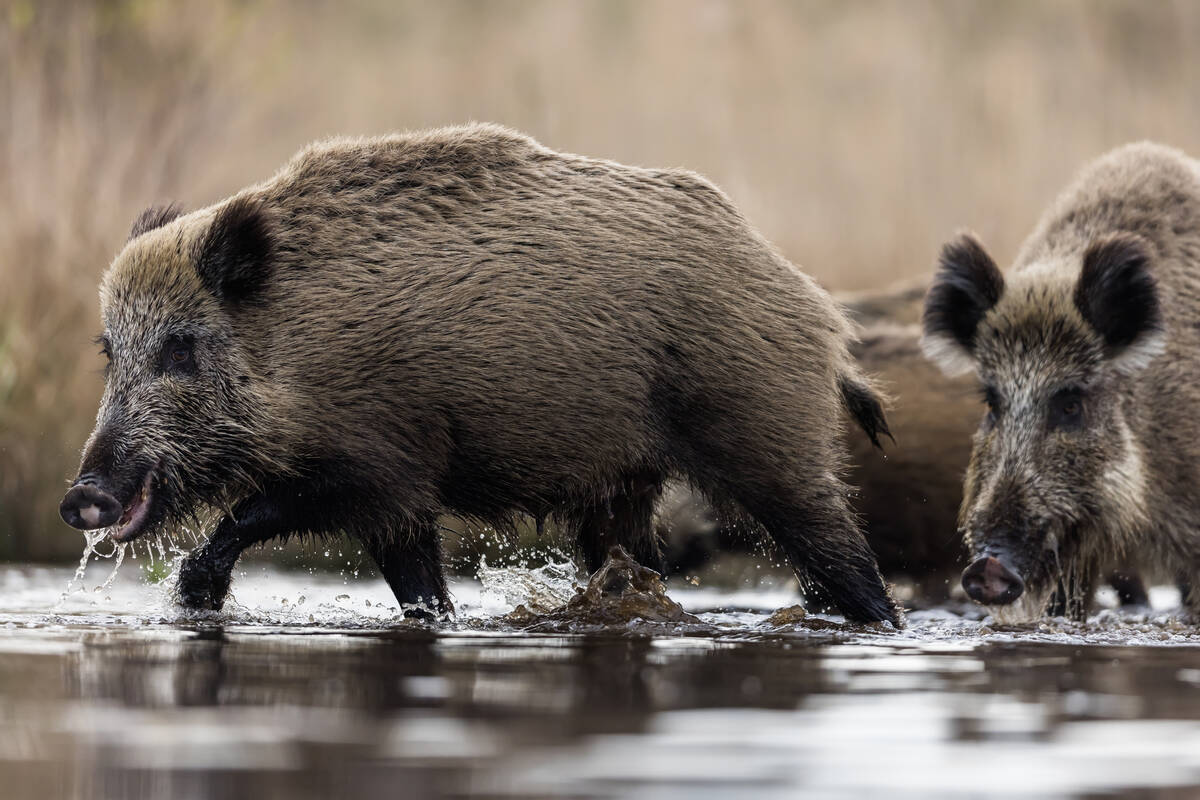Cattle producers spend a lot of time deciding which vaccine to use, getting the timing right and applying it the correct way.
However, In order to get maximum efficiency out of the vaccines, we also need to look after them right up until the time of injection.
Much has been written on this, but several new thoughts have been brought up in the last while. This article will be a review but also introduce new ideas.
Read Also

Manitoba bans wild boar possession
Manitoba has tightened the regulatory status of Eurasian wild boar in an effort to help fight back against invasive wild pigs.
Vaccines are called biologicals for a reason: consider them fragile and easily destroyed by fluctuations in temperature.
They cost good money, so we must keep that chain of refrigeration intact.
That also goes for immune modulators and antimicrobials, although few exist yet.
When checking producers’ fridges, I’ve found that more than half of them do not maintain the right temperature in the ideal 3 to 5 C range. Systems that record minimum and maximum temperatures can help.
We all take our fridges for granted, and there may be long stretches, especially on farms, where the fridge is not even checked.
We probably all have had a fridge fail over the years, and Murphy’s law would say it happens when it is the fullest and filled with vaccine needed the following week.
Fridge alarms can save producers’ grief and money. Most vet clinic fridges are alarmed because they commonly fail over a long weekend when no one is around.
When filling the fridge, make sure certain areas don’t get too cold because some appliances, particularly older ones, will freeze vaccine.
Overheating and freezing can damage vaccines.
When filling the fridge, bring the older vaccines to the front to avoid expiry date issues.
As well, never fill the doors because temperatures constantly rise and fall as they are opened and closed.
When using coolers, pre-chill them with ice packs to get the inside temperature close to fridge temperature.
I don’t like to bring more vaccine to the field in portable coolers than what I will use by midday. Keeping it in the fridge is never a bad idea. I fill the automatic syringes and then place the rest of the bottle back into the fridge until I need it again.
When taking a break, the automatic gun should also be placed in the fridge.
Vaccine shortages and back orders have become a major problem. In Canada we just seem to scrape by, and of course, we’re always looking at alternative products.
Vet clinics need a second line of vaccines so their clients don’t run short.
If shortages occur, talk to your vet about how to manage the problem.
At major processing or branding events, train staff to use the proper processes. Give the more experienced person the vaccinating job.
Use well-cleaned syringes and change needles when they are bent, burred or dull, about every 10 animals. Label guns so that vaccines aren’t mixed.
Mix modified vaccine as it is needed so that it is used within an hour.
When administering two vaccines to one animal, they should ideally be given on opposite sides of the neck or at least a hand width apart.
Review your vaccine protocol with your veterinarian because timing is critical and in some cases, you may be able to either limit or remove certain vaccines or use new combinations that provide more coverage and reduce the number of needles that are required.
All vaccines need to pass strict safety and efficacy standards, so the brand is not nearly as critical as the diseases you’re protecting against.
In almost all cases, vaccine failure is the result of improper storage, handling or administration.
As well, be aware that allergic reactions, although very rare, sometimes occur so have epinephrine and dexamethasone on hand in an emergency kit and observe cattle, especially calves, for half an hour after they have been vaccinated.
Not all animals develop adequate protection, but the goal is herd immunity, which means achieving 80 per cent protection or greater.
Roy Lewis works as a veterinarian in Alberta.














